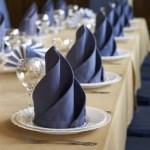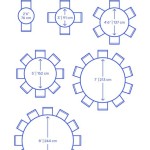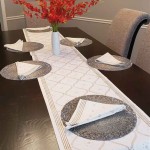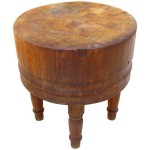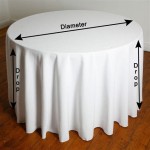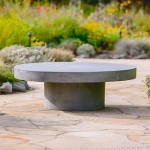How To Make A Table Runner With Backing Paper
Creating a table runner adds a personal touch to any dining occasion, transforming a simple table setting into a decorative centerpiece. By incorporating backing paper into its construction, the table runner gains stability, prevents slippage, and enhances its overall durability. This article outlines the step-by-step process of crafting a table runner with backing paper, focusing on precision, quality materials, and techniques that ensure a professional finish.
Selecting Materials and Tools
The foundation of a well-crafted table runner lies in the careful selection of materials and tools. The quality of these components directly impacts the final product's appearance, longevity, and ease of construction.
Fabric: The choice of fabric dictates the aesthetic appeal of the table runner. Cotton, linen, and blended fabrics are popular choices due to their versatility, durability, and ease of handling. Consider the table's style and the intended use of the runner when selecting a fabric. For formal occasions, silk or velvet may be appropriate, while cotton or linen blends are suitable for everyday use. Prior to cutting, pre-wash the fabric to prevent shrinkage after the runner is completed. The length of fabric needed will depend on the desired length of the table runner, always adding extra for seam allowances and potential adjustments.
Backing Paper: Backing paper, often fusible interfacing, provides stability and prevents the table runner from slipping on the table surface. Fusible interfacing comes in various weights, ranging from lightweight to heavyweight. Choose a weight that complements the chosen fabric. Lightweight interfacing is suitable for delicate fabrics, while heavier interfacing provides more structure for thicker fabrics. Ensure the interfacing is slightly smaller than the main fabric to avoid it extending beyond the edges during fusing. Pre-shrinking the fusible interfacing is also recommended to prevent puckering after it is applied to the fabric.
Thread: Select a thread that matches or complements the chosen fabric. High-quality polyester or cotton thread is recommended. Ensure the thread is strong enough to withstand the wear and tear of regular use. It's also beneficial to have a variety of thread colors on hand to match different fabrics in future projects. Always test the thread on a scrap of fabric before beginning the main project to ensure the color matching is accurate and the thread tension is appropriately adjusted on the sewing machine.
Cutting Tools: Accurate cutting is essential for a professional-looking table runner. A rotary cutter, cutting mat, and quilting ruler are highly recommended for precise cuts. Fabric scissors can be used for smaller cuts and trimming. A seam ripper is also useful for correcting errors. Always use sharp cutting tools to prevent fraying and ensure clean lines. Dull blades can damage the fabric and make the cutting process more difficult and less accurate. Invest in high-quality cutting tools to save time and frustration in the long run.
Sewing Machine: A reliable sewing machine is essential for constructing the table runner. Ensure the machine is in good working order and properly threaded. Select a stitch length that is appropriate for the chosen fabric. A straight stitch is typically used for most seams. Test the stitch on a scrap of fabric before beginning the main project. Consider using a walking foot attachment for sewing multiple layers of fabric or slippery fabrics. Regular maintenance of the sewing machine, including cleaning and oiling, will ensure its longevity and performance.
Iron and Ironing Board: A high-quality iron and ironing board are crucial for pressing seams and fusing the interfacing to the fabric. Use the appropriate heat setting for the chosen fabric. Always test the iron on a scrap of fabric before ironing the main project. Use a pressing cloth to protect delicate fabrics from scorching. Proper ironing is essential for achieving a professional finish. Pressing seams open reduces bulk and makes the table runner lie flat. A steam iron can be helpful for removing wrinkles and setting seams.
Preparing the Fabric and Backing Paper
Proper preparation of the fabric and backing paper is a critical step that ensures the final product is free from imperfections and maintains its shape over time.
Cutting the Fabric: Measure the desired length and width of the table runner, adding seam allowances. A standard seam allowance is typically 1/2 inch. Cut the fabric accordingly, using a rotary cutter, cutting mat, and quilting ruler for precision. If using a patterned fabric, pay attention to the pattern placement to ensure it is centered and visually appealing. Cut two pieces of fabric: one for the top layer and one for the backing layer. Ensure the fabric pieces are perfectly aligned before cutting to avoid discrepancies in size. Mark the cutting lines with a fabric marker or tailor's chalk. Double-check all measurements before making the final cuts.
Cutting the Backing Paper: Cut the backing paper slightly smaller than the fabric pieces, usually by about 1/4 inch on all sides. This prevents the interfacing from extending beyond the fabric edges during fusing. Place the backing paper on the wrong side of the fabric. If using fusible interfacing, ensure the adhesive side is facing the fabric. Use a dry iron on the appropriate heat setting to fuse the interfacing to the fabric. Follow the manufacturer's instructions for fusing time and temperature. Apply even pressure to ensure the interfacing adheres evenly to the fabric. Allow the fused fabric to cool completely before handling.
Ironing the Fabric: Iron the fabric pieces to remove any wrinkles or creases. Use the appropriate heat setting for the chosen fabric. A steam iron can be helpful for stubborn wrinkles. Pay attention to the grain of the fabric when ironing. Ironing the fabric ensures a smooth surface for sewing and fusing. Ironing also helps to set the fibers of the fabric, preventing it from shifting during the sewing process. A well-ironed fabric is easier to work with and results in a more professional-looking final product.
Optional Quilting: Consider quilting the fabric and interfacing together before assembling the table runner. This adds texture and stability to the project. Simple straight-line quilting or more intricate free-motion quilting can be used. Use a walking foot attachment on the sewing machine to prevent the fabric from shifting during quilting. Mark the quilting lines with a fabric marker or tailor's chalk. Test the quilting pattern on a scrap of fabric before quilting the main project. Quilting also provides an opportunity to add decorative elements to the table runner.
Assembling the Table Runner
The final stage involves assembling the prepared fabric pieces to create the finished table runner. This requires careful attention to detail and precise sewing techniques.
Sewing the Fabric Pieces Together: Place the two fabric pieces right sides together, aligning the edges carefully. Pin the fabric pieces together to prevent them from shifting during sewing. Sew around the perimeter of the table runner, leaving a 6-inch opening on one side for turning. Use a 1/2-inch seam allowance. Backstitch at the beginning and end of the seam to secure the stitches. Trim the corners of the fabric to reduce bulk. This will help the corners lie flat when the table runner is turned right side out. Remove the pins before turning the table runner.
Turning the Table Runner Right Side Out: Carefully turn the table runner right side out through the opening. Use a point turner or a dull pencil to push out the corners. Ensure the corners are sharp and well-defined. Gently press the edges of the table runner to create a crisp, clean finish. Iron the entire table runner to remove any wrinkles or creases. Pay particular attention to the seams, pressing them open to reduce bulk. A well-pressed table runner will have a professional and polished appearance.
Closing the Opening: Fold the raw edges of the opening inward, pressing them with an iron to create a clean edge. Pin the opening closed. Use a blind stitch or a machine stitch to close the opening. A blind stitch is nearly invisible and provides a professional finish. A machine stitch can be used for a quicker and more durable closure. Ensure the stitches are secure and blend in with the fabric. Remove the pins after closing the opening. Iron the closed opening to ensure it lies flat and is seamless.
Topstitching (Optional): Topstitching around the perimeter of the table runner adds a decorative touch and reinforces the edges. Use a contrasting thread color for a more pronounced effect. Sew 1/4 inch from the edge of the table runner. Ensure the stitches are straight and evenly spaced. Topstitching also helps to prevent the fabric from fraying. A walking foot attachment can be helpful for topstitching multiple layers of fabric. Test the topstitching on a scrap of fabric before topstitching the main project.
Adding Embellishments (Optional): Consider adding embellishments such as trim, tassels, or appliques to further customize the table runner. Trim can be sewn along the edges of the table runner. Tassels can be attached to the corners. Appliques can be sewn onto the surface of the table runner. Use fabric glue or fusible interfacing to attach small embellishments. Ensure the embellishments are securely attached and complement the overall design of the table runner. Embellishments can add a personal touch and make the table runner unique.

How To Sew A Simple Table Runner Through My Front Porch

Pleated Diy Paper Table Runner Beautify Creating Beauty At Home

Pleated Diy Paper Table Runner Beautify Creating Beauty At Home

Make A Patchwork Hexagon Table Runner My Poppet Makes

How To Make A Simple Spring Quilted Table Runner Stone Cottage Home

How To Make A Short Table Runner I Should Be Mopping The Floor

One Hour Table Runner Tutorial Complete Step By Instructions

How To Make A Table Runner Beginner Sewing Projects

Diy Ruler Table Runner

Sher S Creative Space Easy Quilt As You Go Table Runner Tutorial
Related Posts

